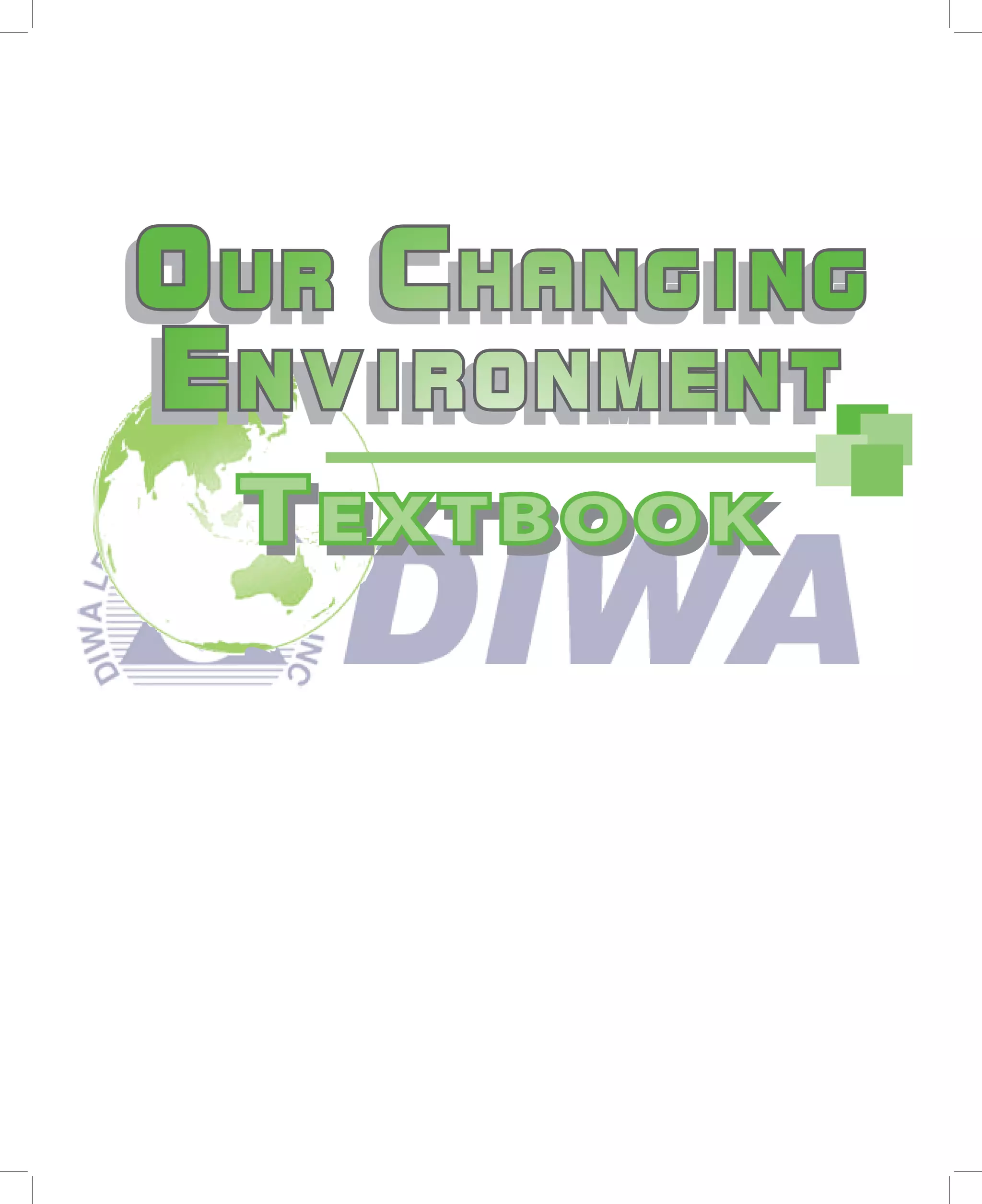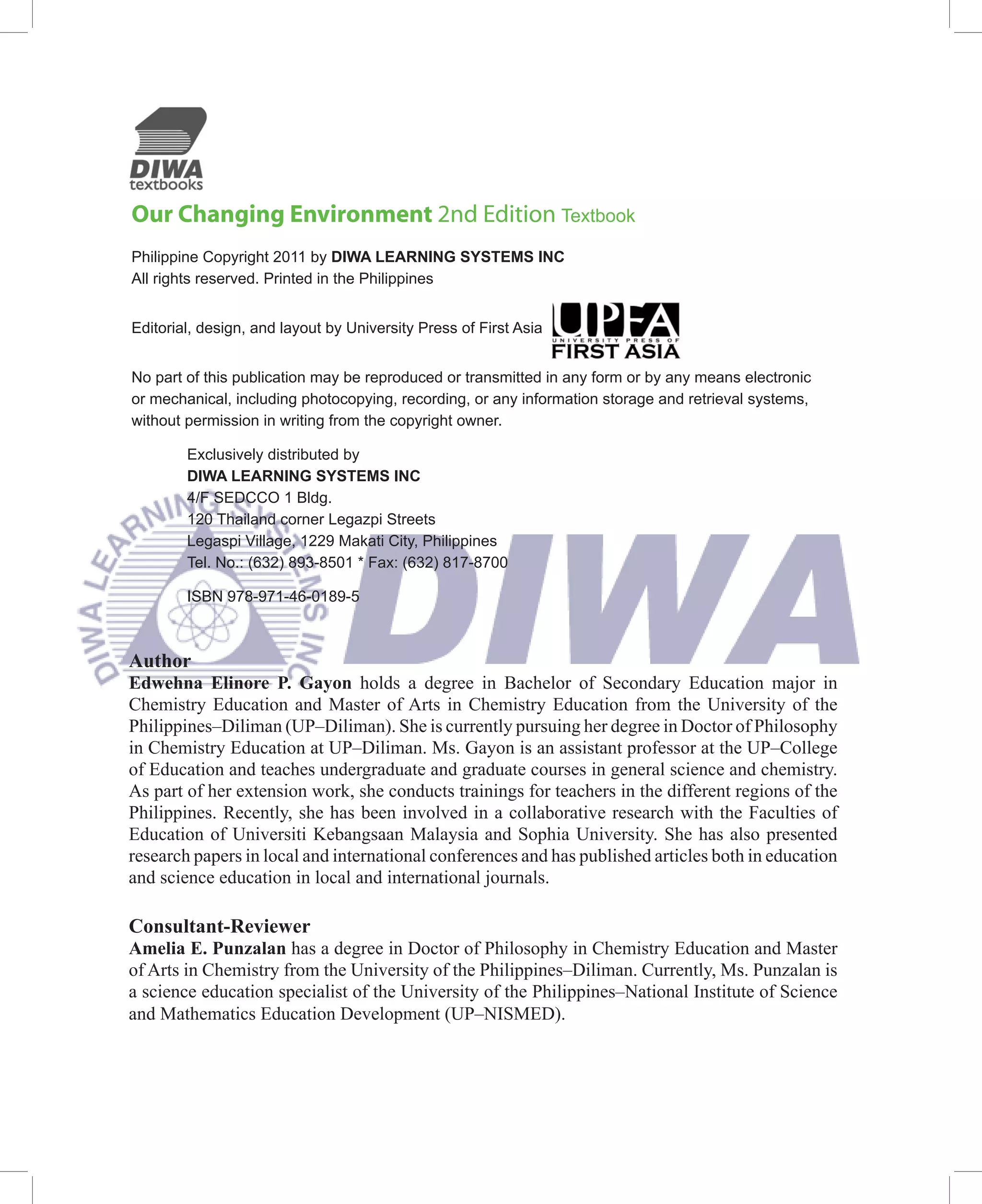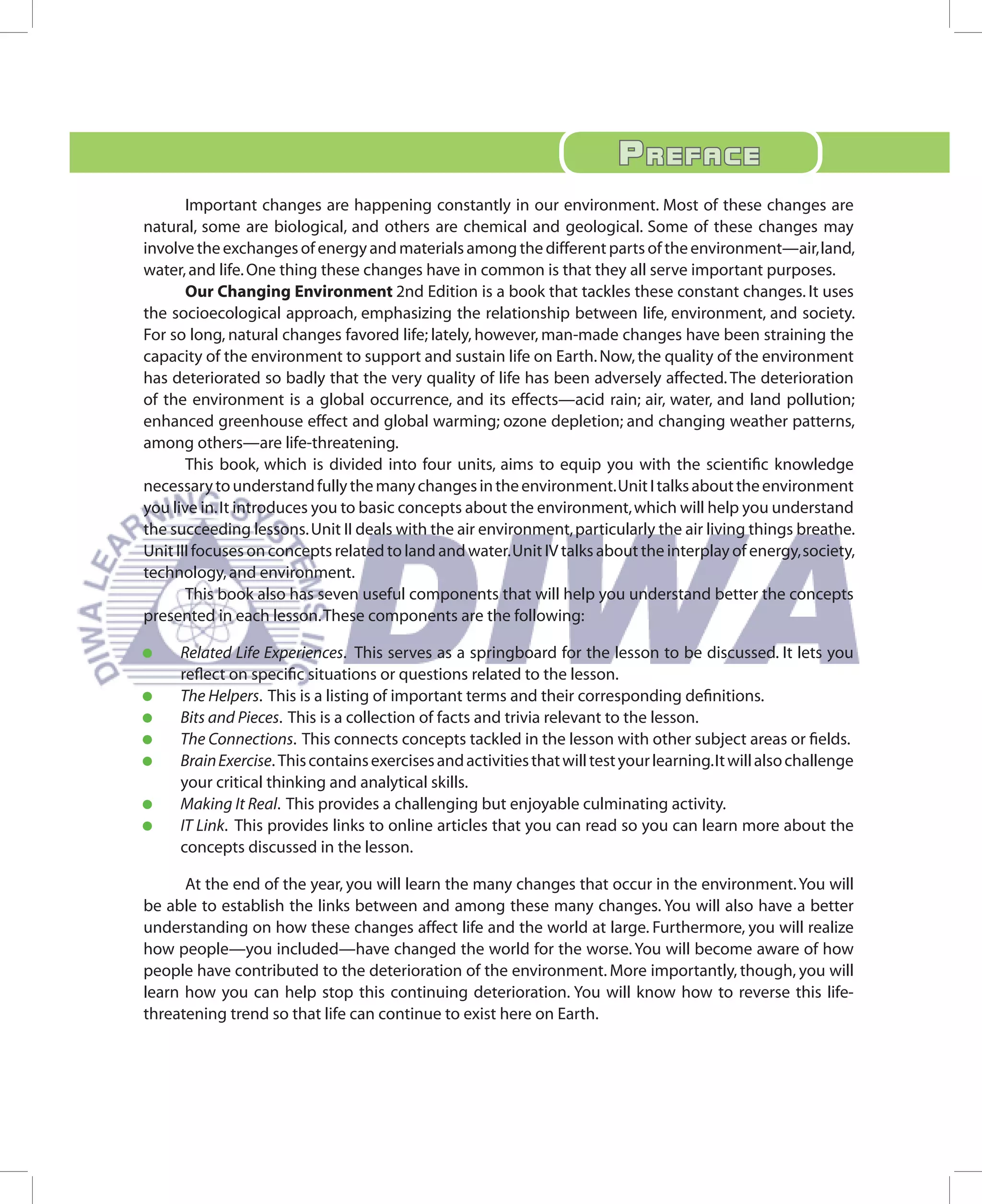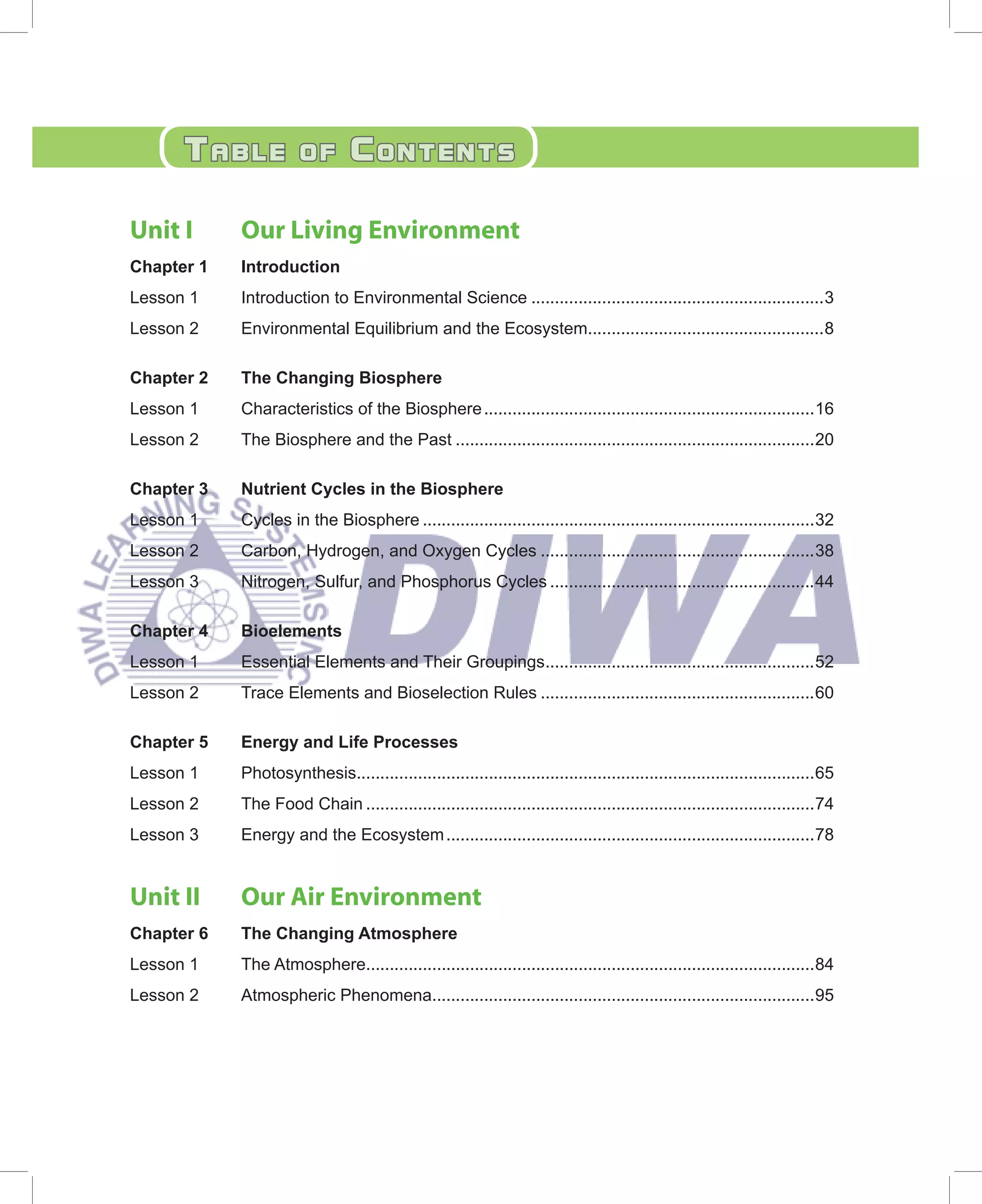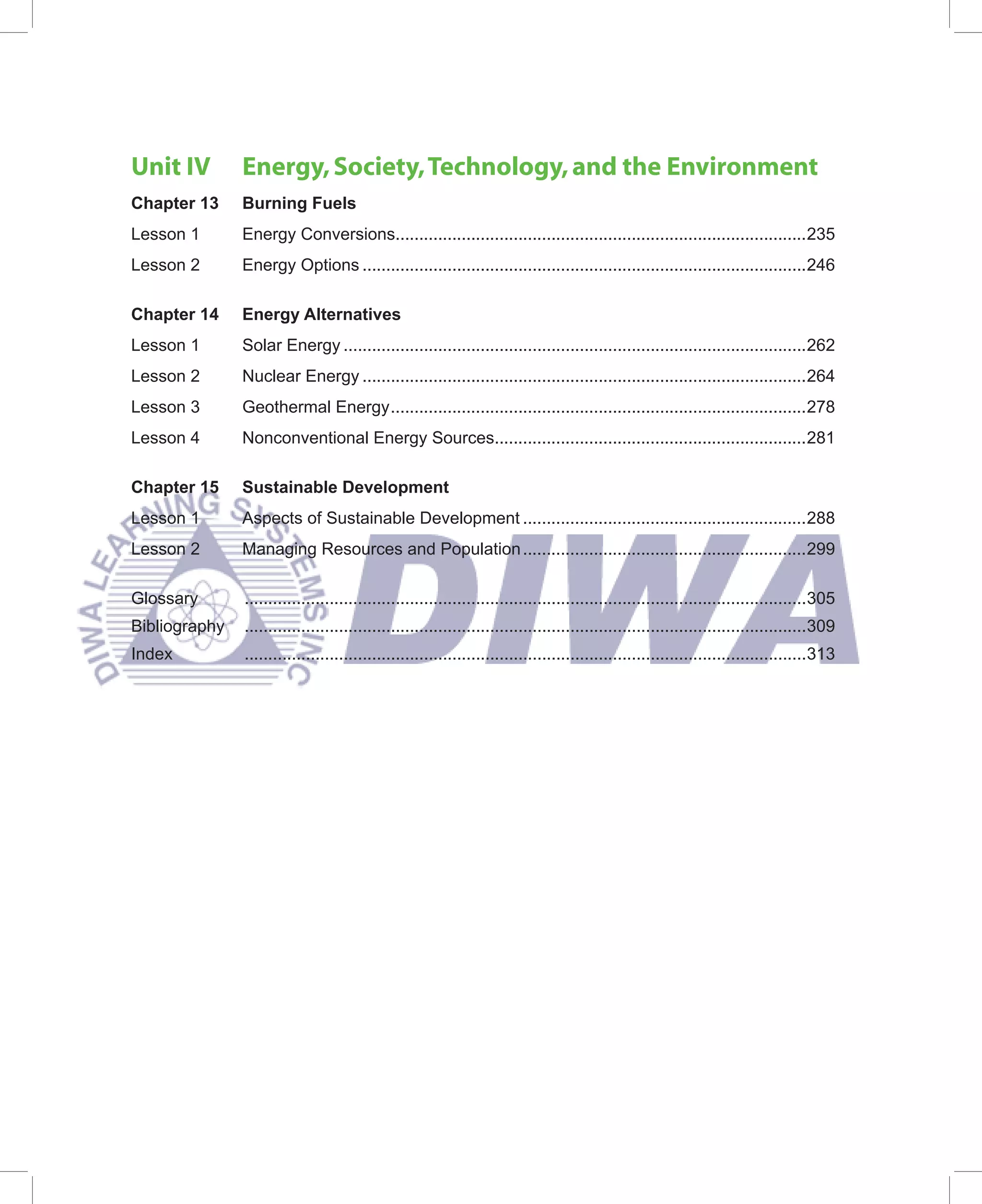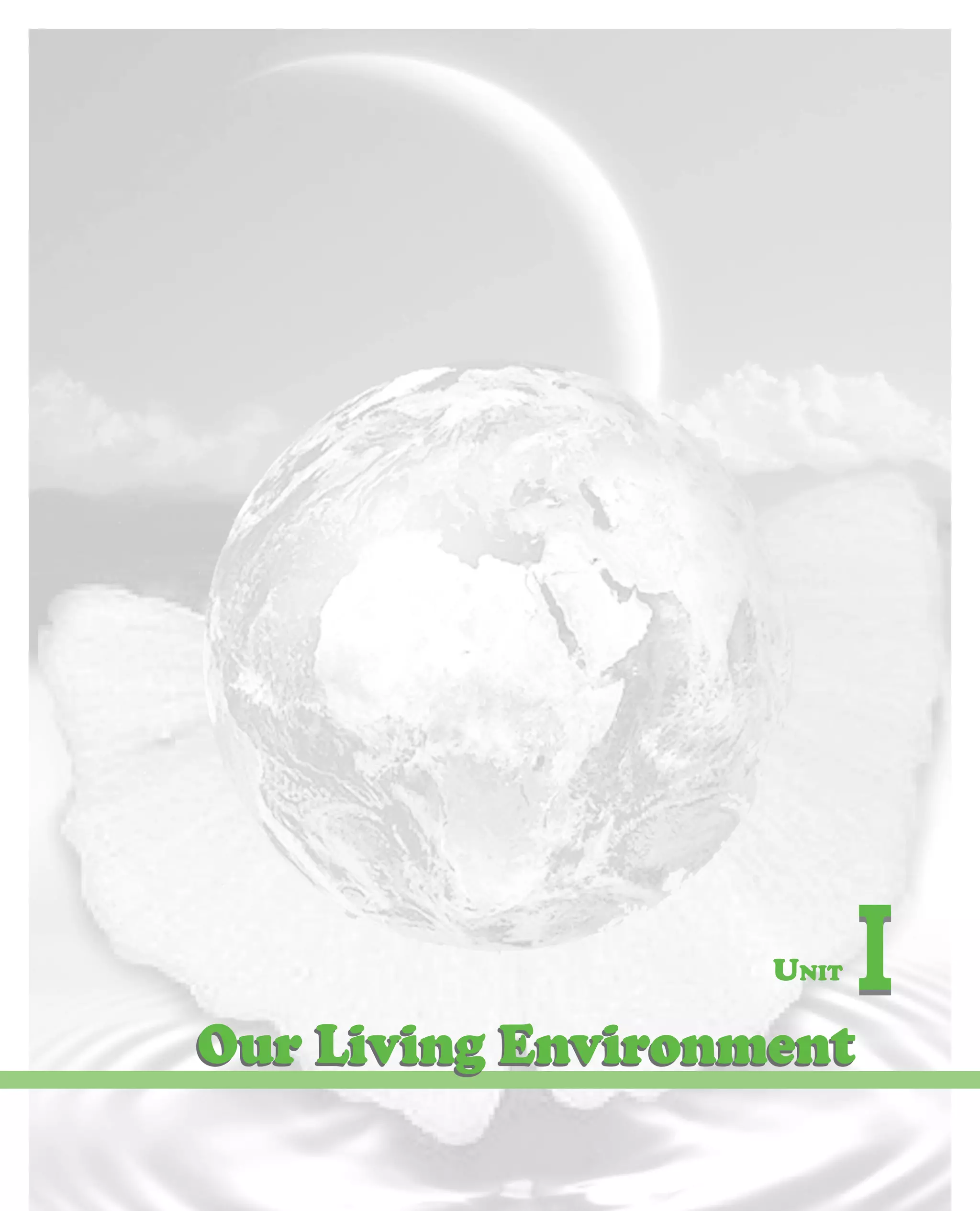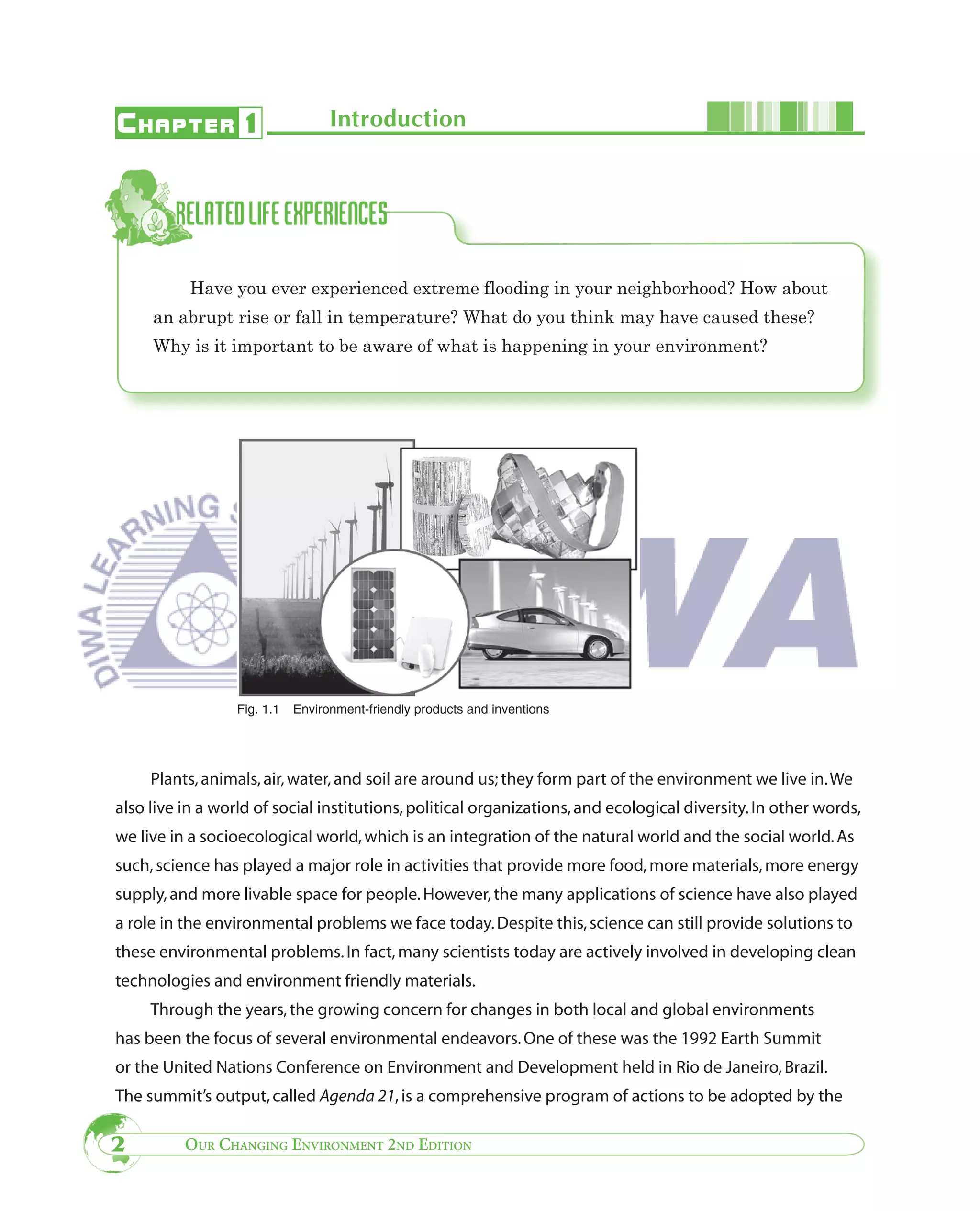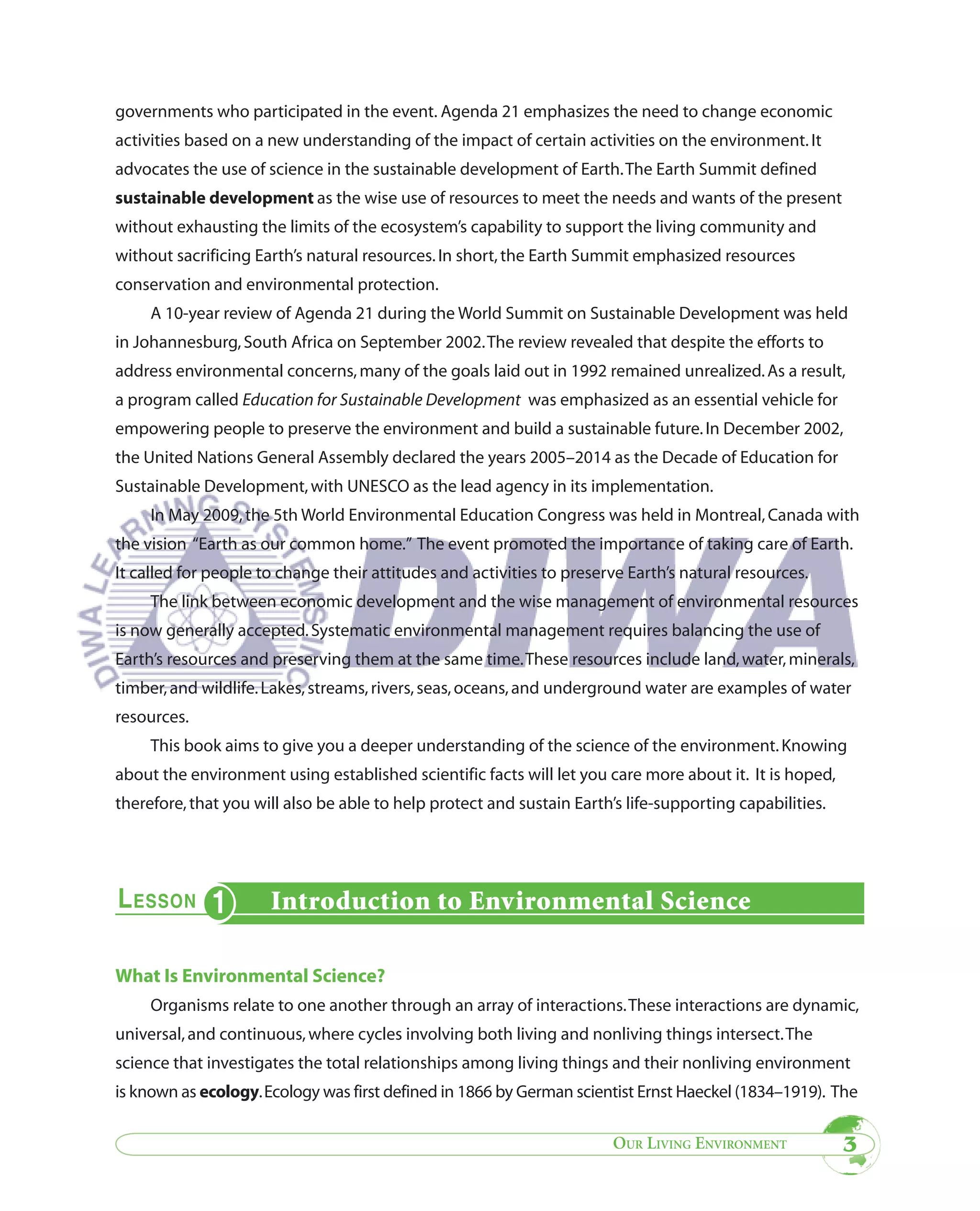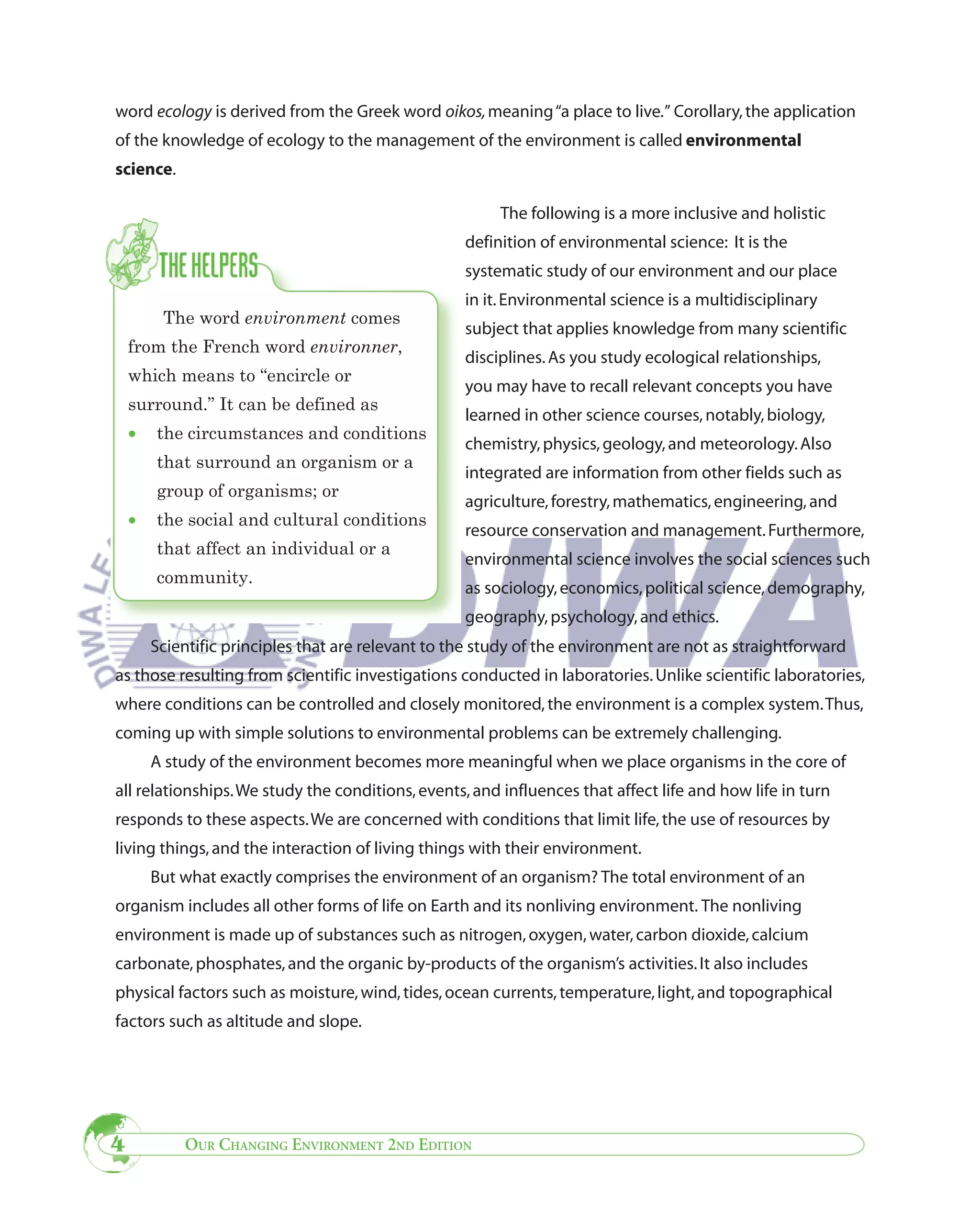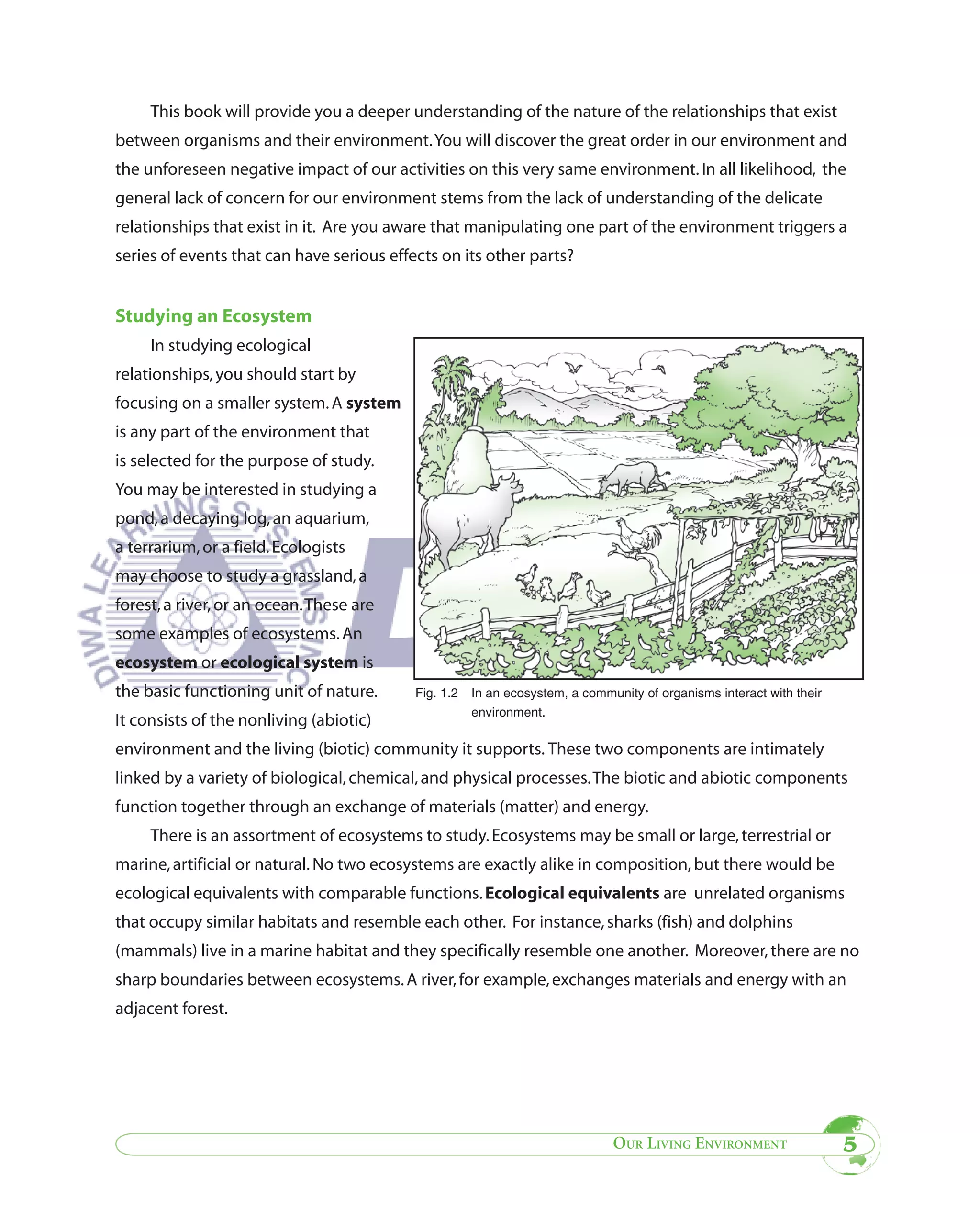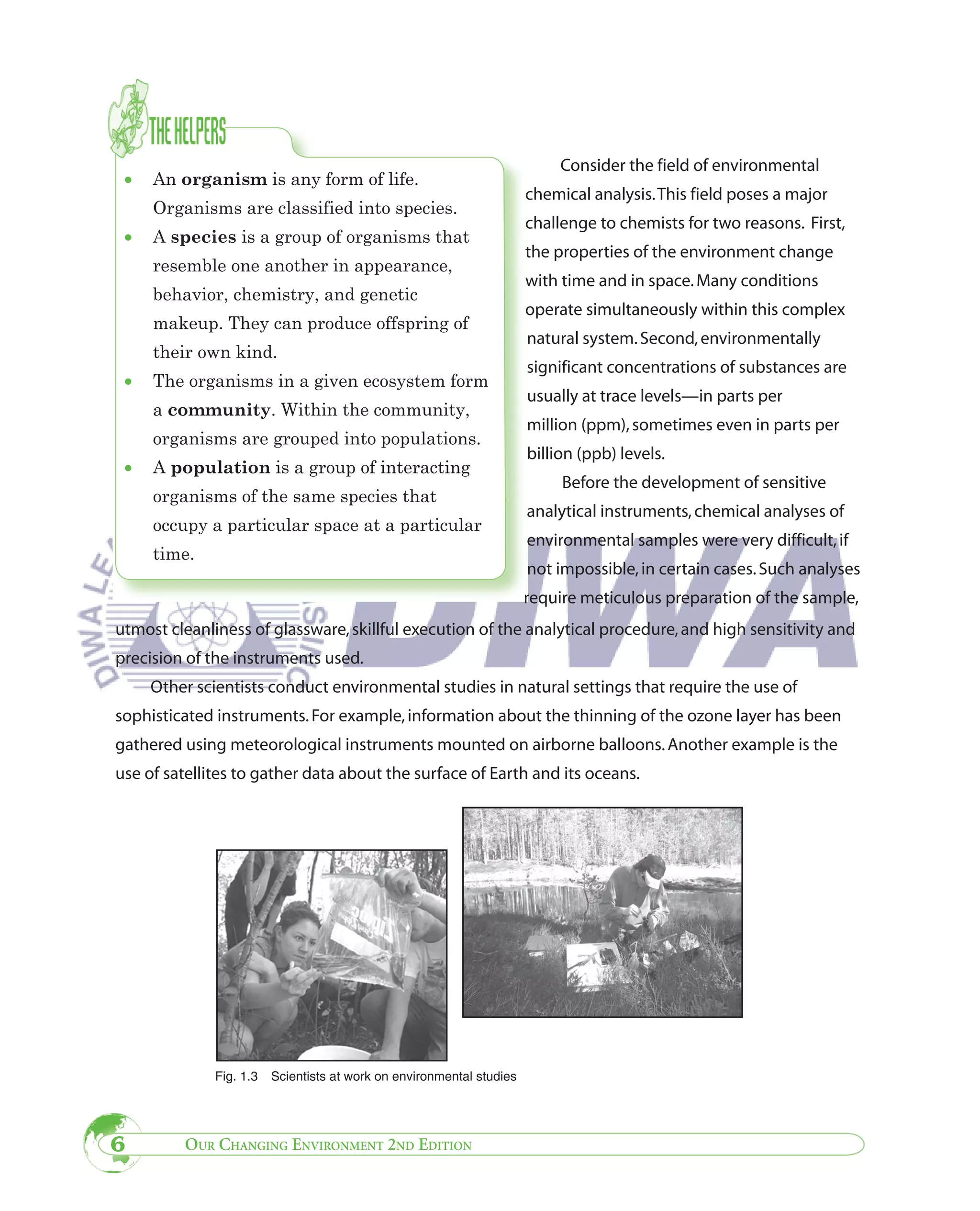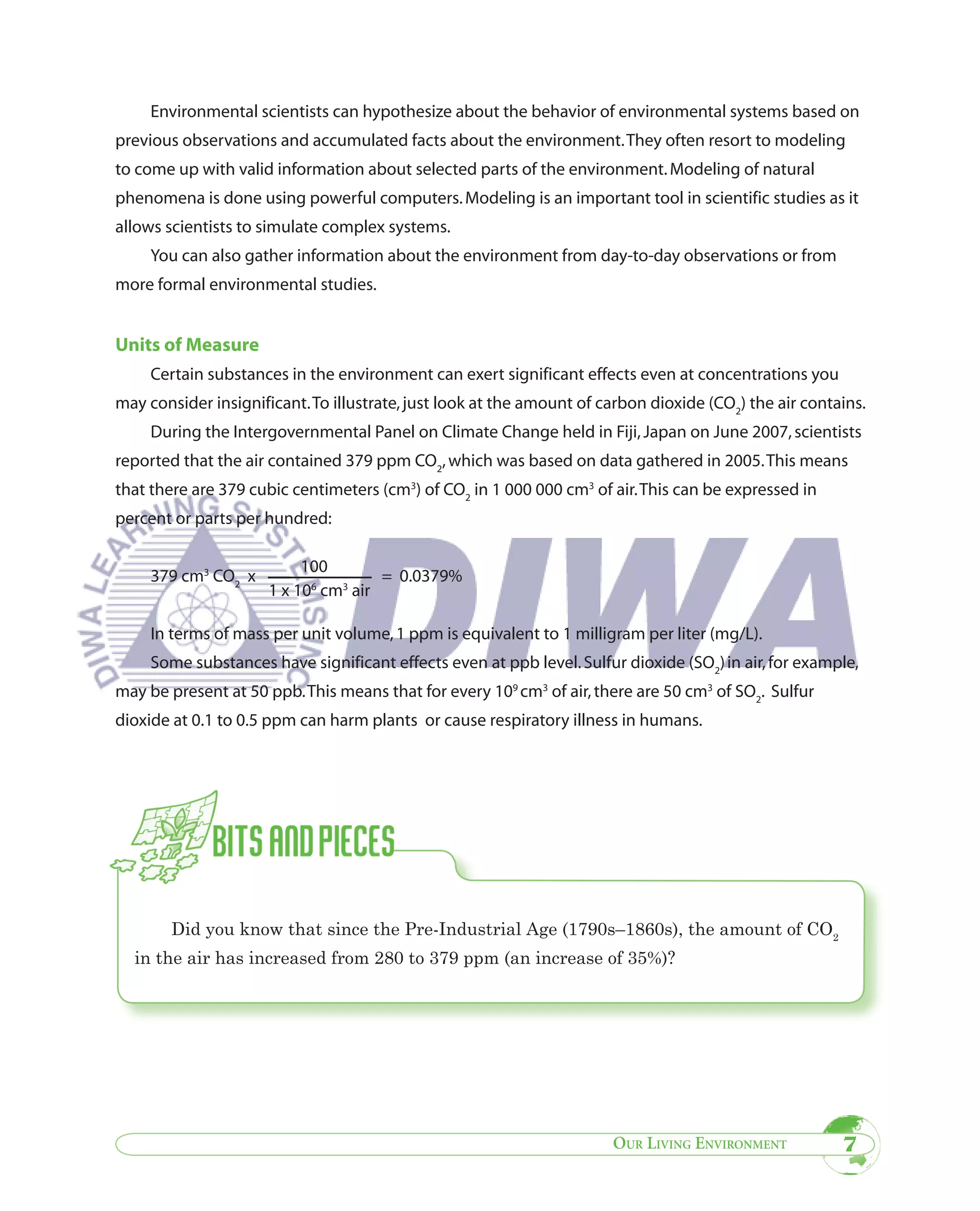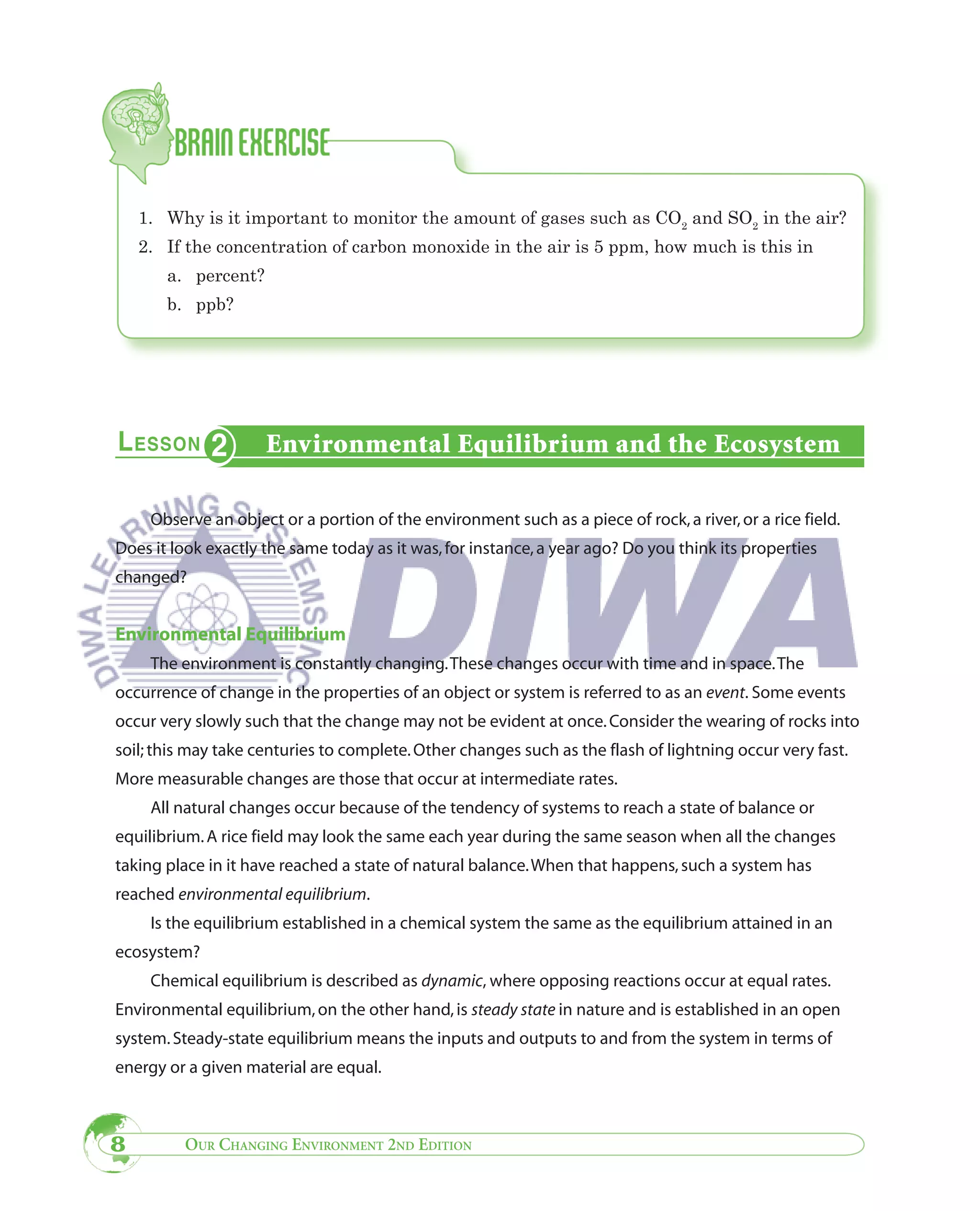Here are the key points about environmental science and ecosystems:
- Environmental science is the study of our environment and our place in it. It applies knowledge from many scientific disciplines like biology, chemistry, physics, and social sciences.
- An ecosystem is the basic functioning unit of nature. It consists of the nonliving (abiotic) environment and the living (biotic) community it supports. These two components interact through an exchange of matter and energy.
- When studying ecological relationships, it's best to start with a smaller system like a pond, field, or aquarium. These are examples of ecosystems that can be observed and analyzed.
